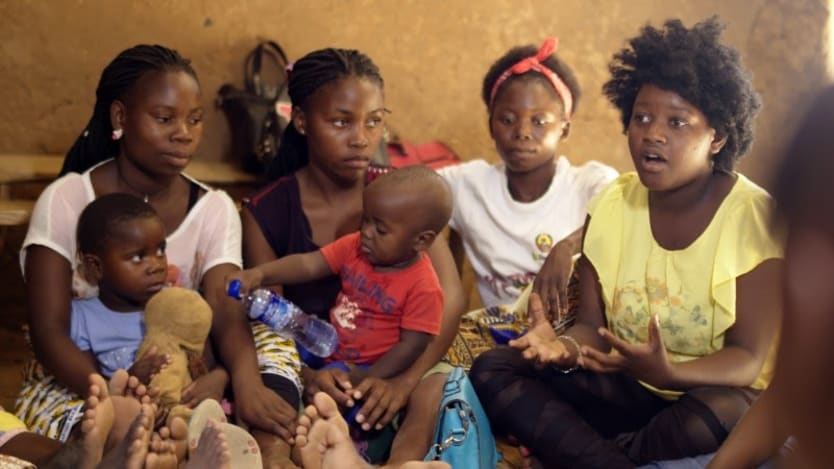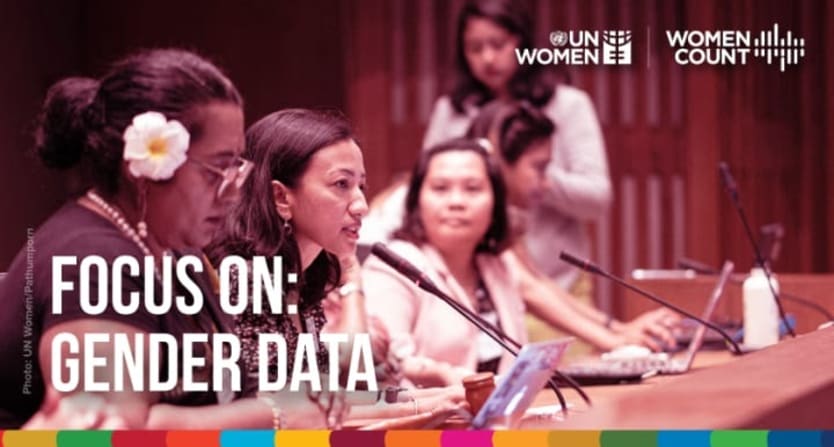
CANBERRA — Girls’ lives are better today than they were 25 years ago, when countries committed to the Beijing Declaration and Platform for Action, according to a UNICEF assessment of available data on education, employment, health, marriage, and children. But this global progress only tells part of the story, as deeper analysis shows uneven gains across regions and countries.
Literacy among female youths aged 15-24 years old has increased from 80% to 90% globally. Enrolment of girls eligible for school has increased from 80% to 88% at the primary level and from 52% to 66% at the secondary level, according to data from UNESCO. The number of girls who are out of school has decreased from 65 million to 32 million among primary school-aged children and from 91 million to 67 million at the upper-secondary-school age.
Understand the barriers facing women and girls by engaging with gender data through a new Tableau interactive.
Life expectancy at birth has increased from 67.5 years to 75.2 years, while the proportion of moderately and severely underweight girls has dropped from 9% to 8%. But the number of overweight girls has more than doubled, increasing from 74 million to 155 million. And HIV remains a concern. While the number of new infections among adolescent girls has halved, the number of girls living with HIV has increased, along with weekly deaths.
When it comes to marriage and children, fewer girls today are child brides, and adolescent birthrates have declined. Access to modern family planning has also increased, with 60% of girls having their family-planning needs satisfied today as compared with 36% in 1995.
Delving beyond global and regional levels of the data UNICEF collected shows vast differences in progress within countries — and reveals contexts where equality for women and girls remains out of reach. Devex has made the data available through a new interactive.
Progressing education
Literacy is an important outcome of providing girls with a quality education — and can determine prospects for improved future employment. For nine countries listed in UNESCO’s education database, the most recent literacy data suggests that less than half of adolescent girls meet literacy standards.
In Somalia, just 11% of girls are literate, while that number is less than 25% in Chad. The Central African Republic, Niger, Guinea, Mali, Liberia, South Sudan, and Guinea-Bissau each report less than half of adolescent girls as literate.
When it comes to school enrolment, Africa is again a continent of concern. In South Sudan, just 21% of eligible girls are enrolled in primary school, and that figure is less than 50% in Liberia, Niger, and Chad. In Somalia, just 0.2% of girls eligible for secondary schooling are enrolled — and less than 10% in South Sudan, Guinea-Bissau, Gambia, and the Central African Republic.
In Israel and Canada, the data says that 100% of eligible girls are enrolled in secondary education — painting a dramatically different picture of education opportunities for girls today.
Progressing health
Improving health conditions are important for a life of greater choices for girls. Life expectancy at birth is one of the markers analyzed.
A total of 12 countries and regions globally report a life expectancy for females above 85 years — with the highest of 87.5 years reported for Hong Kong and Japan. For girls in these places, the statistics provide hope for a long and healthy life.
But the gap between the highest and lowest life expectancies for females is a massive 32.6 years. A girl born today in Sierra Leone and the Central African Republic is expected to live to 54.9 years.
An unhealthy weight — being moderately or severely underweight or overweight — is also an area of dramatic difference. In Ireland, New Zealand, and Switzerland, just 0.2% of girls are reported as being moderately and severely underweight. The most recent data from India indicates that almost a quarter of girls are underweight to the point of malnourishment, followed by Pakistan at 15.3% and Bangladesh at 13.6%.
For girls classified as overweight, the Pacific region is the area of highest concern. In Nauru, 68.3% of girls are overweight. Palau, the Cook Islands, and American Samoa — at 66.7%, 66%, and 65.9%, respectively — are also among the poorest-performing countries on this indicator.
HIV infections and deaths were also analyzed by UNICEF to assess changing conditions for girls. Of the global total of adolescent girls living with HIV — numbering 970,000 — over 20% are based in South Africa, a country that also reports the highest number of new annual infections for girls in this age bracket. But weekly AIDS-related deaths for adolescent girls is highest in Nigeria, with an average of 28.8 weekly deaths, according to the most recent data, suggesting a health system that is not able to meet needs.
Among these health indicators, the inequality of gender progress is vast.
Progressing choice
Being forced into marriage, having children young, and lacking access to modern family planning also limits the choice and opportunities for young women.
For many countries, the percentage of women aged 20 to 24 who entered marriage or a union before the age of 18 remains high. According to the available data, more than half of women are expected to be married as a child in eight countries — with the highest rate in Niger at 76.3%. For the Central African Republic and Chad, the figures were also above 65%.
The birthrate for adolescent mothers aged 15 to 19 may have declined globally, but the gaps between the best performing and worst performing show more work is required to enable all girls equal choice. In Switzerland, the adolescent birthrate is just 2.8 for every 1,000 girls. But five countries’ rates exceed 150 births for every 1,000 girls: Angola at 150.5, Equatorial Guinea at 155.6, Chad at 161.1, Mali at 169.1, and Niger at 186.5.
Access to modern family-planning methods among adolescent girls is also important to help with both choice and preventing a cycle of poverty. But while 89.2% of girls in Cuba have satisfactory access to services and more than three-quarters do in Colombia, Eswatini, and South Africa, just 6.4% of adolescent girls in Albania have satisfactory access to services. Kiribati, the Central African Republic, and Eritrea also report less than 10% of girls have suitable access to modern family-planning services.
While digging deeper into the data shows that progress has been unequal and challenges remain, it provides an important avenue for identifying the greatest needs — and creating new programs and policies to target specific cultural, political, or economic barriers that create inequality for girls.
Understand the barriers facing women and girls by engaging with gender data through a new Tableau interactive.
Devex, with support from our partner UN Women, is exploring how data is being used to inform policy and advocacy to advance gender equality. Gender data is crucial to make every woman and girl count. Visit the Focus on: Gender Data page for more. Disclaimer: The views in this article do not necessarily represent the views of UN Women.

